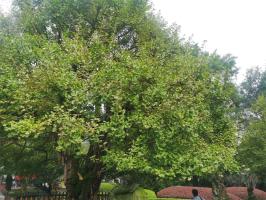Introduction
Plants and trees have a significant impact on the world's carbon cycle. They play a critical role in absorbing carbon dioxide (CO2) from the atmosphere through photosynthesis. However, there is a common misconception that they do not produce CO2. In this article, we will delve deeper into whether plants and trees produce CO2, how much they produce, and the reasons behind it.
Do plants and trees produce CO2?
The simple answer is yes. While it is true that plants and trees absorb CO2 through photosynthesis, they also produce CO2 through respiration. During respiration, plants and trees release CO2 as a byproduct of breaking down glucose to generate energy. This process occurs throughout the day and night, unlike photosynthesis that only takes place during the day while sunlight is available.
How much CO2 do plants and trees produce?
The amount of CO2 produced by plants and trees is relatively small compared to the amount they absorb. A tree, for instance, can absorb up to 48 pounds of CO2 per year while only producing around 6 to 7 pounds of CO2 through respiration during the same period. The amount of CO2 produced by plants and trees varies depending on several factors such as light intensity, temperature, and plant species.
Why do plants and trees produce CO2?
As mentioned earlier, plants and trees produce CO2 as a result of respiration. This is because they need energy to carry out several cellular functions such as growth, reproduction, and maintenance. During photosynthesis, plants and trees produce glucose from CO2 and water. The glucose is then used as energy to power cell functions, and excess glucose is stored in the plant's tissues. At night or during periods when light is unavailable, plants and trees rely on stored glucose to generate energy through respiration, hence releasing CO2 as a byproduct.
The role of CO2 production by plants and trees in the carbon cycle
Plant and tree respiration plays a crucial role in the carbon cycle, contributing to the balance between CO2 absorption and emission. While plants absorb CO2 during photosynthesis, the CO2 they produce during respiration is later used by other plants or decomposers. When plants or animals die or shed leaves, the organic matter is broken down by decomposers such as fungi and bacteria, releasing CO2 back into the atmosphere. This process completes the carbon cycle while maintaining a balance between CO2 absorption and emission.
The bottom line
In conclusion, plants and trees not only absorb CO2 but also produce it through respiration. However, the amount of CO2 they produce is relatively small compared to what they absorb. This highlights the importance of plants and trees in mitigating the effects of climate change by absorbing excess CO2 from the atmosphere. Understanding the role of plants and trees in the carbon cycle is crucial in developing strategies for reducing greenhouse gas emissions and promoting sustainable living.

 how many times do yo...
how many times do yo... how many planted tre...
how many planted tre... how many pine trees ...
how many pine trees ... how many pecan trees...
how many pecan trees... how many plants comp...
how many plants comp... how many plants can ...
how many plants can ... how many plants and ...
how many plants and ... how many pepper plan...
how many pepper plan...






























